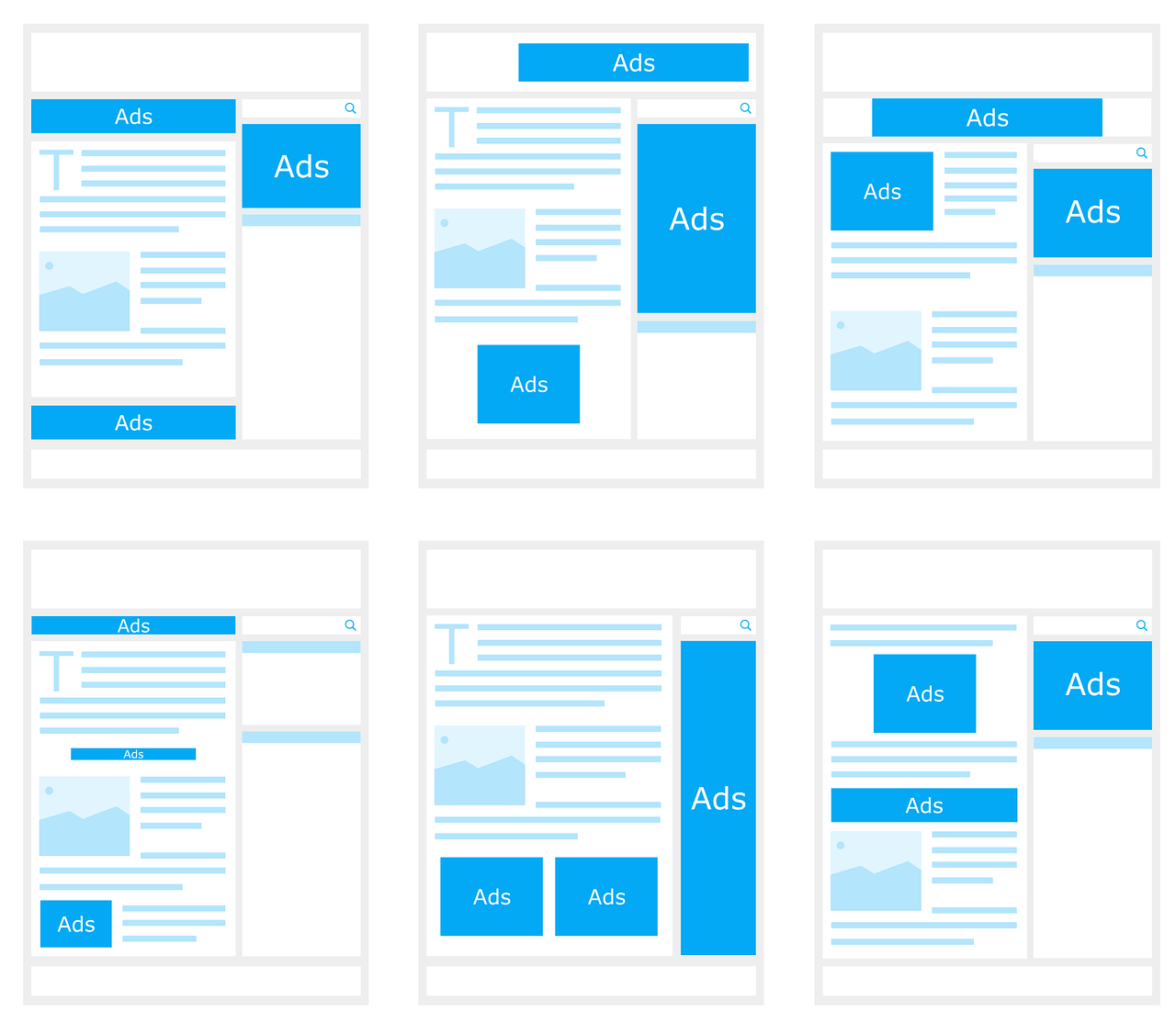In today’s digital world, companies are looking for ways to reach and address their target groups effectively. One of the most important components of any digital marketing strategy are adverts.
Ads” include the visual elements and messages that appear in an advert, such as images, videos, headlines and text. Creating effective adverts is crucial to the success of your advertising campaign.
In this article, we take a closer look at ads, the testing process and their optimisation. If you want to achieve the best results with your campaigns, then stick with it to the end!
Understanding Ad Creatives
Ad creatives are the visual and communicative components that make up an advert. They play a decisive role when it comes to addressing and engaging the target audience. The ad creative can be decisive for the success of an advertising campaign.
Adverts can be used in various places in the digital world, for example on social media platforms, in search engines, display networks and other channels. They are available in the form of images, videos, infographics, animations and many other formats.
Subscribe to the Raidboxes newsletter!
We share the latest WordPress insights, business tips, and more with you once a month.
"*" indicates required fields
Different types of ad creatives all have their own strengths and weaknesses. For example, image-based adverts are particularly suitable for quickly grabbing people’s attention. However, this means that they may not contain much information about the advertised product or service.
Video advertising, on the other hand, is often more appealing and can provide more information, but also requires more resources for production.
Adverts are of crucial importance in digital marketing and play a fundamental role in the success of a campaign. With the right adverts, you can attract the attention of your target group, increase your brand awareness and boost your conversion rate.
Why you need to test your ad creatives
Ad testing is important for several reasons. Firstly, they provide companies with data to back up their strategies. The results of ad creative tests can provide valuable insights into what is working and what is not. In turn, this information can be used to inform future decisions and strategies. When companies back up their ideas with data, they can make informed decisions that are more likely to lead to success.
Secondly, testing advertising media provides ideas for further improvements. The results of testing can highlight areas that need attention and organisations can use this information to make changes that will lead to better performance. This may include changes to the design, messaging or targeting of the adverts.
Thirdly, testing advertising media makes it possible to understand and segment different target groups. By conducting tests with different audience segments, companies can gain a deeper understanding of the specific needs and preferences of each group. This information can be used to create more targeted and effective advertising campaigns.
Finally, testing ads helps you to react more quickly to changes. With the help of an efficient testing workflow, you can constantly analyse your ads, make changes and continuously improve your marketing. This is especially important in today’s fast-paced digital landscape, where new technologies and trends emerge regularly. By continuously testing adverts, you can ensure that your advertising remains effective and relevant.
How to start a corporate influencer program
Turning employees into corporate influencers is a powerful way to boost brand trust and reach – learn how to start your own program and who to follow for inspiration.
Testing creatives is an important part of any digital marketing strategy. It provides you with valuable data and insights and enables you to understand and segment your target group. It also helps you to react quickly to new trends and avoid losing relevance.
Ad Creative test process: objectives, implementation and analysis
The process of testing ads involves creating different versions of adverts, running the tests and analysing the results. The aim of the ad creative test is to find out which version of the ad works best and delivers the best results.
The first step in the ad creative testing process is planning and preparation. This includes defining the objectives for the test, determining the target group and defining the channels to be used for the test.
Once the objectives have been defined, the next step is to create the variants of the adverts. Different versions are created, each containing a different visual element or message component. One version of the advert might contain a different headline, while another version might contain a different image.
Once the variants have been created, the test is carried out. This involves running the different versions of the ads on the selected channels and tracking their performance.
The final step is to analyse the results of the test. This involves comparing the performance of the individual versions of the adverts and determining which version performed best. The results of the test can be used to optimise the ads and improve their performance in future campaigns.
Content marketing for advanced users: The 6 most important levers
Discover how to optimize your content marketing to reach the right audience, build trust, and achieve long-term success.
Creative elements that you can test
When testing ads, there are many variables that you can scrutinise to optimise the performance of your ad campaign.
These elements include
- The advertising message: This is the headline, the text, the call to action and the basic concept of your advert. You can test a more direct message against a more humorous or playful wording to see which is better received.
- Look and feel: This includes the design and visual elements of your ad, such as the colour scheme, images and typography. You can test different design elements to see which ones have the biggest impact on engagement and conversion rates. For example, you could compare a bright, bold colour scheme with a darker look and see which style performs better.
- The target group: This includes the demographic and geographical information of the people you want to reach with your advert. You can test different targeting strategies to find out which one works best for your business. You can test whether targeting a specific age group or a broader target group works better.
- Ad format: This includes the type of ad you are using, e.g. a video ad, an image ad or a carousel ad. You can test different formats to identify the most effective ones for you.
- Placement: This refers to where your advert is displayed on a platform, e.g. in the feed, on the homepage or in a specific area of the platform. By testing different placements, you can find out where your adverts perform best.

By testing different elements of your ad design, you will gain a better understanding of what resonates with your target audience and what brings the best results. You can then use this information to optimise your campaigns and improve your overall marketing strategy.
Facebook, Instagram, Twitter: differences on social media platforms
Testing creatives can vary greatly depending on the social media platform used. Each platform has its own unique features, algorithms and target demographics, which can impact the effectiveness of adverts.
- On Facebook , businesses can test a variety of ad formats, including image and video ads, carousel ads and even augmented reality ads. Facebook also offers a range of targeting options, including demographic, location and interest-based targeting, which businesses can use to reach specific audiences.
- On Instagram , businesses can test a variety of ad formats, including image ads, video ads and story ads. Instagram also has a large and engaged user base, particularly among the younger generations, which can be a key factor in the success of adverts on this platform.
- Companies can test image and video adverts as well as sponsored content on LinkedIn . LinkedIn is particularly well suited for B2B advertising and can be an effective platform for reaching professional target groups.
- Twitter is another popular platform for ad testing, and businesses can test image and video ads as well as Promoted Tweets there. Twitter offers a fast-paced, real-time environment and businesses can use this to their advantage by testing timely and relevant adverts.
- TikTok has become one of the most popular platforms in recent years and is known for its unique short video format. This format has attracted a highly engaged user base, making TikTok an attractive platform for anyone with a younger target audience. Advertisers on TikTok can test different ad formats, including in-feed video ads, TopView Ads and so-called “Spark Ads”. TikTok also offers a range of targeting options, including demographic, location and interest-based targeting. TikTok’s algorithm is designed to encourage viral content. Well-designed and engaging creatives can therefore reach a large audience.
It can be noted that each social media platform has its own unique features and audience. It’s important to understand these differences when conducting creative tests. By knowing the strengths and limitations of each platform, you can create promotional materials that are more effective and tailored to your target audience.
This is the role of A/B testing
In an A/B test, two versions of an advertising medium are shown to different user groups and the performance of each version is tracked and compared. The version that performs better is then used as the primary advertising medium for the campaign. This process can be repeated several times, testing different variants to continuously improve the performance of the ad campaign.
On Facebook , for example, a company could test two different variants of an image advert, with one variant using a red background and the other a blue background. The performance of each variant is then tracked and compared. At the end, the variant with the better interaction rate is selected and scaled.
Similarly, a company could test two different versions of a text advert on Google, with one version using a more direct message and the other using a more playful tone. The performance of each version is then tracked and compared, and the version with the better click-through rate is played out long-term, while the poorer performing version is deactivated.
In this way, advertising expenditure can be focussed on the best creatives in order to use resources as efficiently as possible.
Challenges and solutions when testing creatives
Ad testing can be a difficult process. There are several challenges that need to be addressed. Some of these challenges include lack of resources, limited budgets and difficulties in tracking and analysing results.
One solution to overcoming these challenges is to make the tests simple and focussed. Rather than trying to test multiple variables at once, it is better to test one variable at a time and gradually add more factors as the results of each test are analysed.
Another approach is to conduct tests on a regular basis. This helps to keep up to date with the latest trends and best practices in ad testing. With a reliable testing rhythm, you can also continuously optimise your ads and improve their performance over time.
When conducting ad tests, it is equally important to segment your target audience. By segmenting the target group, you can tailor your creative to the specific needs and interests of each group, resulting in more effective and targeted advertising campaigns.
Best practices at a glance
To achieve the best results when testing ads, it is important to rely on best practices. Follow the principles below:
- Keep it simple: Avoid complex tests where several variables are tested at once. Instead, set up your creative tests as simply as possible to keep the analysis simple and get meaningful results.
- Frequent tests: Regular tests ensure that your ads are always up to date and relevant for your target group.
- Target group segmentation: You can customise your advertising to better match the wishes and interests of different groups. This allows you to make your advertising campaigns more effective and targeted.
- Continuous optimisation: By periodically testing and examining the results, you have the opportunity to constantly optimise your ads and increase their efficiency in the long term.
Conclusion: Tests for ad creatives
Ads are an essential part of any digital marketing strategy, and effective ad testing is critical to the success of an advertising campaign. With the right tools, best practices and a focus on continuous optimisation, companies can achieve the best results from their ad testing.
To summarise, if you invest in ad testing, you’ll be better equipped to effectively reach and engage your target audience, increase brand awareness and drive conversions.
Skilful testing and constant optimisation enable you to achieve optimum results with your advertising campaigns and your marketing goals.
Your questions on the topic of ad creatives
Do you have any questions about ad creatives and advertisements? Then feel free to use the comment function. For more insights on WordPress, web design or online business, follow Raidboxes on Facebook or LinkedIn – or subscribe to our newsletter.


Leave a Reply